ISSN ONLINE(2319-8753)PRINT(2347-6710)
ISSN ONLINE(2319-8753)PRINT(2347-6710)
| Muthu Visuvanathan PG Student [Industrial Engineering], Kumaraguru College of Technology, Coimbatore, India |
| Related article at Pubmed, Scholar Google |
Visit for more related articles at International Journal of Innovative Research in Science, Engineering and Technology
During the decade of 1990s, reengineering has captured the imagination of many industry leaders across the globe. Reengineering has been used by many companies for the pursuit of organisational efficiency through automation, labour saving and streamlining systems and procedures and the management reforms through business, market, technology and organizational development. We are doing our project in private Cement manufacturing plant. The problem in cement industry is high inventory level. So our main objective is to reduce the high inventory level in cement manufacturing plant. Reengineering concept will accepted in industry as a strategy initiative. Reengineering has been considered as a multidimensional problem solving approach, emphasizing on very significant improvements in the organizational performance in terms of multiple parameters such as quality, cost, delivery, etc. to gain competitive advantage. Reengineering project relating to the materials management function of a cement manufacturing plant is presented in this paper. There are 5 inventory control policies are used in this project. They are perpetual review policy, Periodic review policy, Two bin policy, Material requirements planning, Optional replenishment policy. By using AHP (Analytic Hierarchy Process) methodology is used to select best optimal inventory control policy. And implement best policy to reduce high inventory level. AHP is a multiple criteria decision-making tool. Material Requirement Planning (MRP) is selected as best inventory control policy by using AHP methodology. After implementing MRP in industry, it controls the high level of inventory and begins production of order at right time. It plans manufacturing activities, delivery schedules and purchasing activities in the industry.
Keywords |
| Materials Management, Organizational development, Strategic initiative, Analytic Hierarchy Process, Material Requirement Planning. |
INTRODUCTION |
| Chettinad cement is operating its cement business spanning three generations. Since its establishment in 1962 with a wet process cements plant at Puliyur near Karur. Chettinad Cement offers an extensive range of bagged products that includes Ordinary Portland cements and blended cements to suit most building and construction applications. Their products are as follows: |
| Pavithram |
| ïÃâç Chettinad Royal Grade 53 |
| ïÃâç Chettinad Grade 43 |
| ïÃâç Chettinad PPC |
| ïÃâç Sulphur Resistant Cement |
II. LITERATURE REVIEW |
| Reengineering concept will accepted in industry as a strategic initiative for managing change and efforts for directing the change are steered in multiple dimensions such as: structure, people, management, and system. Many companies which have successfully implemented reengineering projects have indicated a number of benefits, such as: improved "financial performance, enhanced customer satisfaction, cost reduction, improved, improvement in productivity. |
| Very large numbers of inventory items complicate the inventory control process. Companies categorize their inventory items into a few groups and take similar inventory control policies for the items in each group to overcome this problem. |
| Analytic Hierarchy Process (AHP), since its invention, has been a tool at the hands of decision makers and researchers; and it is one of the most widely used multiple criteria decision-making tools. Many outstanding works have been published based on AHP. |
| Material Requirements Planning is a time phased priorityplanning technique that calculates material requirements and schedules supply to meet demand across all products and parts in one or more plants. |
III. PROBLEM DEFINITION |
| The problem in cement industry is High inventory levels. Inventory levels were very high as compared to the consumption in cement industry. Due to large amount of raw materials are stored, there are some disadvantages |
IV. METHODOLOGY |
| These problems can be solved by following reengineering concepts. The approach is explained in the following fig.1 |
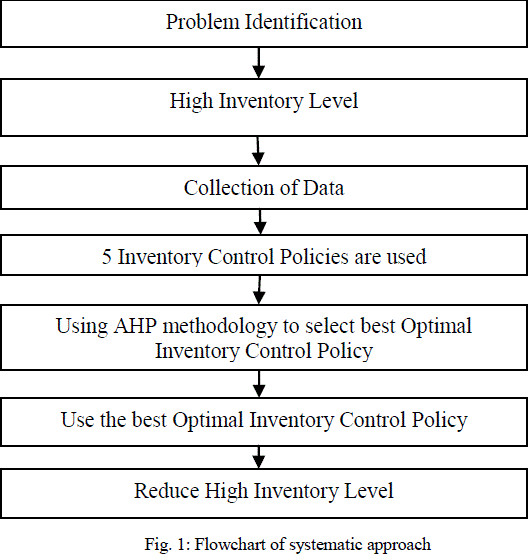 |
V. COMPANY DETAILS |
| The Company speciality of products,Technical services and raw materials are as follows: |
| A. Speciality of Products |
| 1) Ordinary Portland Cement (OPC): |
| Our Gray Ordinary Portland Cement is a high-quality, cost-effective building material mainly composed of clinker that meets all applicable chemical and physical requirements and is widely used in all construction segments: residential, commercial, industrial, and public infrastructure. |
| 2) Portland Pozzolana Cement (PPC): |
| This Blended hydraulic cements are produced by intergrinding or blending Portland cement and supplementary cementitious materials such as fly ash. |
| 3) Sulphate Resisting Portland Cement (SRPC): |
| SRPC is a type of Portland Cement in which amount of tri-calcium aluminate (C3A) is restricted to low value. Use of Chettinad SRPC is more beneficial in the condition where the concrete is exposed to the deterioration due to sulphate attack and exposed directly to sea coast. |
| 4) Portland Slag Cement (PSC): |
| PSC is produced by an intimate and uniform inter-grinding of Portland Cement Clinker and granulated slag with addition of Gypsum. The use of blended cements reinforces our strong dedication to sustainable practices and furthers our objective of offering an increasing range of more sustainable products. |
| B. Technical Services |
| Chettinad Cement Corporation Limited offers various services to our customers. Some of these include: Selection of proper aggregates materials for concrete mix design. |
| C. Raw Materials |
| Raw materials used for manufacturing cement are as follows: |
| Limestone |
| Sandstone |
| Shale |
| Marl |
| Gypsum |
| 1) Data Collection: |
| Cement produced per month = 18000 Tonnes |
| 2) Current Status: |
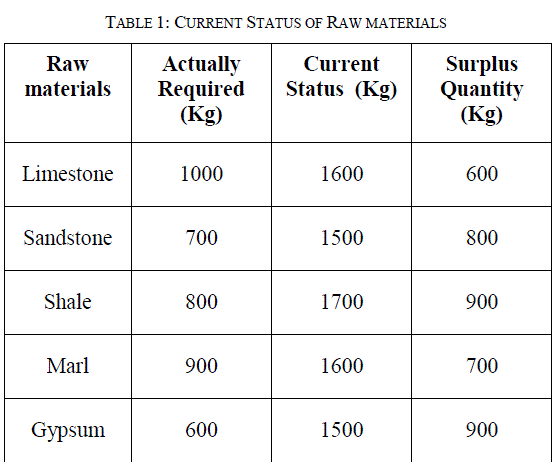 |
| The current status of raw materials is required for a week is shown in above table. |
| 3) Raw materials cost: |
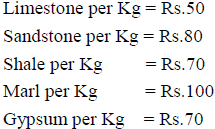 |
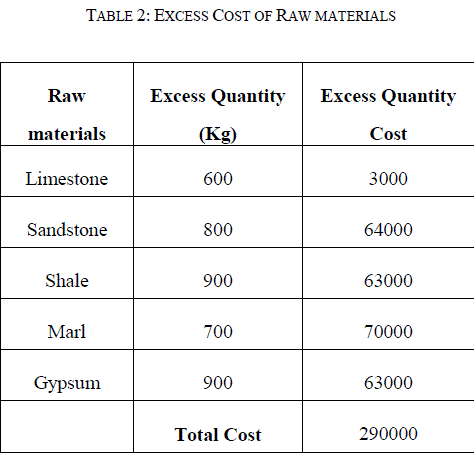 |
| Problem in excess of Raw materials: |
| Company paid maintenance of raw materials = 40000/month |
| Holding cost reduces the company profit = 5000/month |
| Carrying cost reduces the company profit = 8000/month |
VI. CRITERIA AND ALTERNATIVES FOR INVENTORY CONTROL POLICY SELECTION |
| The materials types and their complex characteristics suggests the following criteria and alternatives to be taken into consideration while selecting the optimal inventory control policy under given conditions. |
| A. Criteria for Inventory Control Policy Selection |
| Criteria and alternatives are important for selecting inventory control policy |
| 1) Order Quantity(OQ): |
| The quantity of material for which the order is to be placed determines the appropriate level of inventory and ordering sequence. |
| 2) Relevant Cost (RC): |
| It is the sum of resultant costs associated with various activities while finalizing an order. 3) Safety Stock (SS): |
| To meet the emergency, a general level of stock is usually maintained which is one kind of insurance stock to care of situations |
| 4) Lead Time (LT): |
| It can be defined as the period of time that elapses between the recognition of a need and its fulfillment, internal, external and others are three major categories of lead times. |
| 5) Demand Forecasting (DF): |
| It is one of the most critical issues of inventory management as forecasting of the actual demand. |
| B. Alternatives for Inventory Control Policy Selection |
| Basically from the application point of view, the inventory control policies can be divided into the following five classes. |
| 1) Perpetual Review Policy(PEP): |
| This inventory control policy works when the stock level for a specific material reaches a pre-determined re-order level, then it reviews the requirement. |
| 2) Periodic Review Policy (PRP): |
| In this policy, the review is made on a particular date, say on the first day of every month. |
| 3) Two Bin Policy (TBP): |
| Only one section of the bin is used for a particular time period and after the consumption of materials from the first section, the second is broken. |
| 4) Material Requirement Planning (MRP): |
| It is a computer based system that makes master production schedule to explore it into the required amount of raw materials, parts, sub assemblies and assemblies. |
| 5) Optional Replenishment Policy (ORP): |
| This policy reviews the inventory status of the materials at a particular interval of time that is not strictly followed. |
VII. ANALYTIC HIERARCHY PROCESS |
| Analytic hierarchy process (AHP) is an effective tool for dealing with complex decision making, and may aid the decision maker to set priorities and make the best decision. |
| The standard procedure for AHP implementation : |
| Define the problem and determine the overall goal. |
| Structure the hierarchy from the top down to bottom comprising of the overall goal, criteria and alternatives present in the problem. |
| Construct a set of pair wise comparisons for each level expressing the preference between two different criteria at the same level. |
| It is possible to determine the final priorities of the alternatives or decision options. |
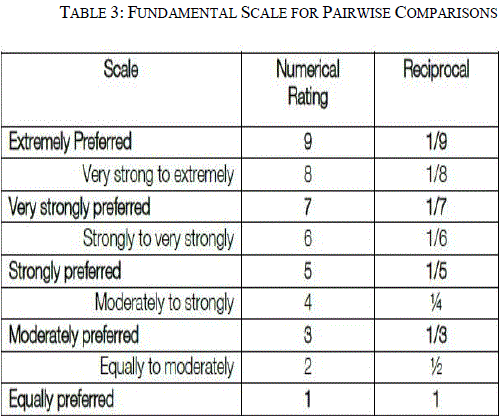 |
VIII. SELECTING BEST OPTIMAL INVENTORY CONTROL POLICY |
| First step is to develop the hierarchy for inventory control policy selection. It is shown in the figure |
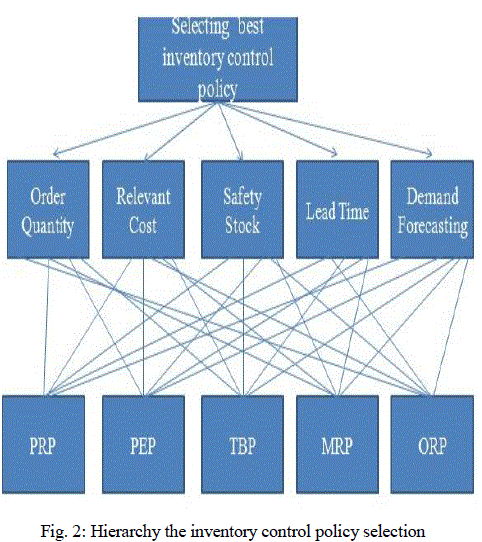 |
| Where, OQ – Order Quantity, RC – Relevant Cost, SS – Safety Stock, LT – Lead Time, DF – Demand Forecasting, PRP – Perpetual Review Policy, PEP – Periodic Review Policy TBP – Two Bin Policy, MRP – Material Requirement Planning, ORP – Optional Replenishment Policy. |
| A. Ranking of Criterias |
| The relative weight data between the criteria that have been determined by questionnaire are in following table |
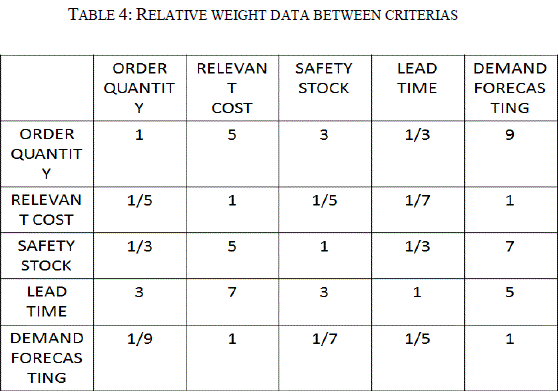 |
| Ranking Priorities rules: |
| To find the ranking of priorities, namely the Eigen Vector X: |
| Take the squared power of matrix A, i.e., A2=A.A |
| Find the row sums of A2 and normalize this array to find E0. Set A:=A2 |
| ïÃâ÷ Take the squared power of matrix A, i.e., A2=A.A |
| Find the row sums of A2 and normalize this array to find E1. |
| Find D= E1 - E0. |
| If the elements of D are close to zero, then X= E1, STOP. |
| ELSE set A:=A2 , set E0:=E1 and go to Step 1. |
| By using above rules, we get E1 – E0 = Almost zero, so Eigen Vector, X = E1 |
| Next step is to find λmax : |
| AX = λmax X, X is Eigen Vector |
| λmax = avg (5.07,5.31,5.14,5.38,6.16) |
| λmax = 5.41 |
| Consistency Index = (λmax - n)/(n-1) C.I = 0.103 |
| • Consistency Ratio = CI/1.12 |
| • (i.e. 1.12 is taken from CR table by saaty’s book) |
| Consistency Ratio = 0.09 ( less than 0.1, evaluations are consistent). |
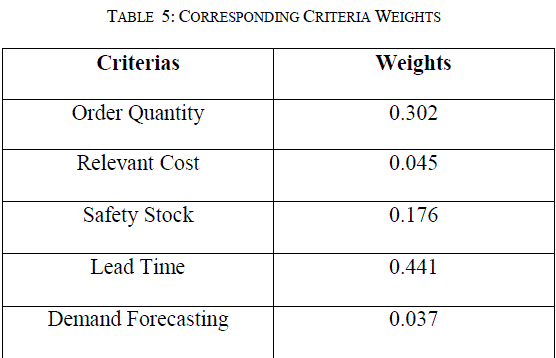 |
| B. Ranking of Alternatives |
| The decision makers from organization have compared five (5) alternatives taking into consideration every one of the five (5) established criteria by questionnaire. The same ranking priorities rules are followed in ranking of alternatives also. The results are shown in the following figure. |
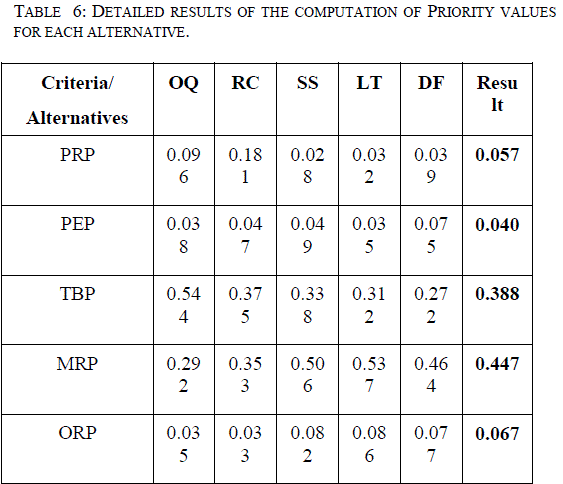 |
| This result value is calculated by multiply the Criteria weights and alternatives weights by using matrix method. From the results it clearly shows MRP has highest value. So, MRP is selected as best optimal inventory control policy by using AHP and it is implemented in the next step. |
IX. IMPLEMENTATION OF MATERIAL REQUIREMENT PLANNING (MRP) |
| Material Requirement Planning (MRP) system exploits the forecast data about dependence on demand in managing inventories and controlling the production. The demand for month 1 listed in the first week of month are shown in following tables. |
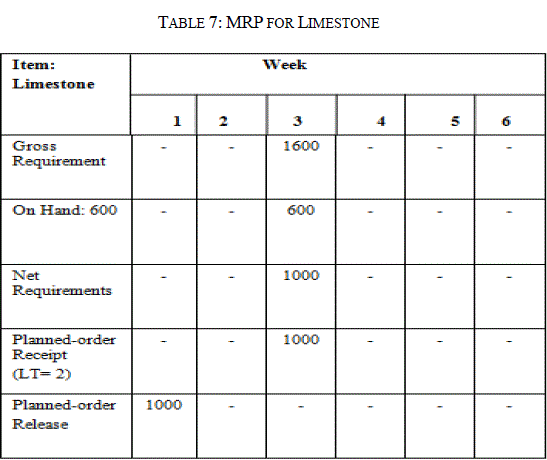 |
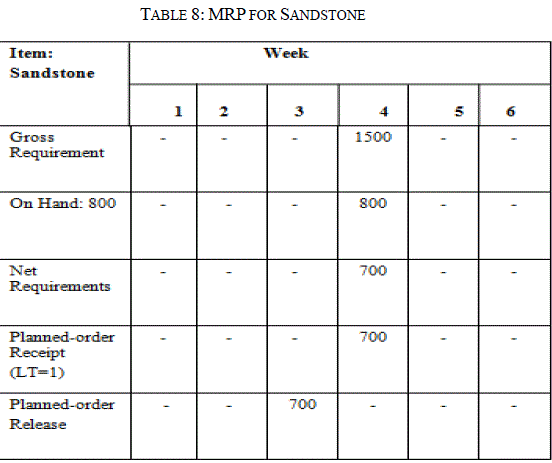 |
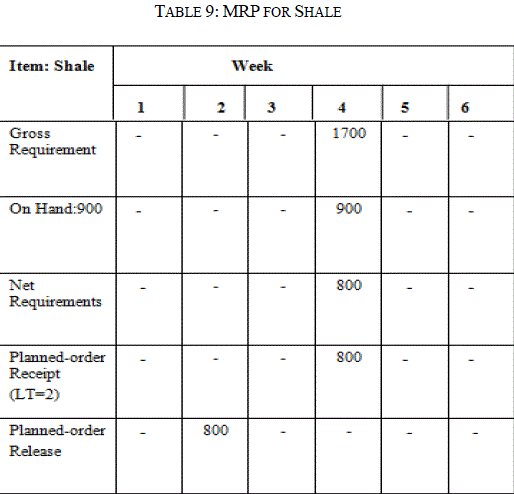 |
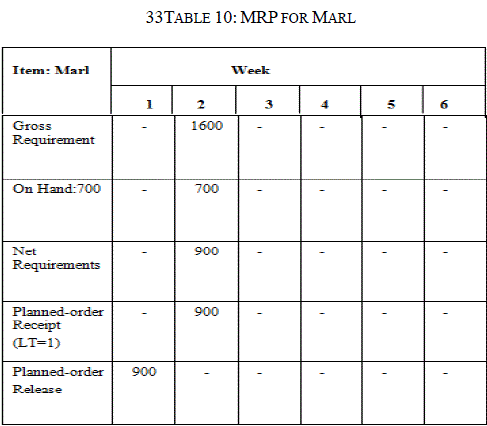 |
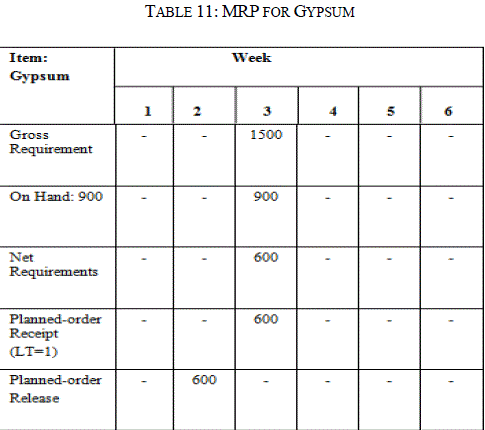 |
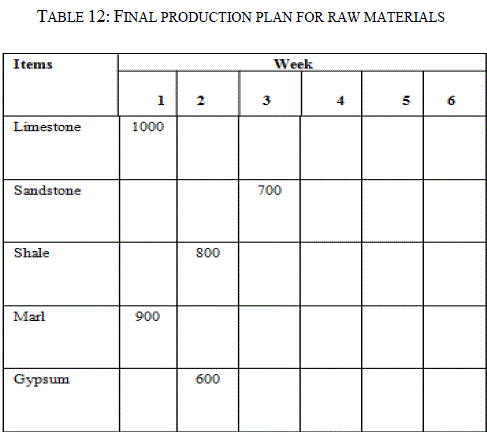 |
| In the tables, LT = Lead Time. For Limestone, it clearly shows the 600 kg of Limestone on hand result in a net requirement of 1000 kg of Limestone (1600 - 600 = 1000). To receive Limestone in week 3, the order must be placed in week 1 to account for the two-week lead time, as it is shown in the table 8. For Sandstone, it clearly shows the 800 kg of Sandstone on hand result in a net requirement of 700 kg of Sandstone (1500 - 800 = 700). To receive Sandstone in week 4, the order must be placed in week 3 to account for the one-week lead time, as it is shown in the table 9. Likewise other raw materials placed order by same way. The final production plans for various raw materials are shown in table 13. As per final production plan, Limestone order must be placed in week 1, Sandstone order must be placed in week 3, Shale order must be placed in week 2, Marl order must be placed in week 1, Gypsum order must be placed in week 2. |
X. CONCLUSION |
| This paper delivers the advantage of Material Requirement Planning (MRP) in ensuring raw materials for production and delivery to customer. It controls the high inventory level of raw materials in the industry. It maintains the lowest possible level of inventory. It plans manufacturing activities, delivery schedules and purchasing activities in the cement industry. Finally Material Requirement Planning (MRP) reduces the maintenance and carrying cost of industry. It improves the unbroken chain of components for production to manufacture goods on time. |
ACKNOWLEDGMENT |
| The author would like to thank the professors and friends for their constructive comments and suggestion on improving the quality of the paper. |
References |
|